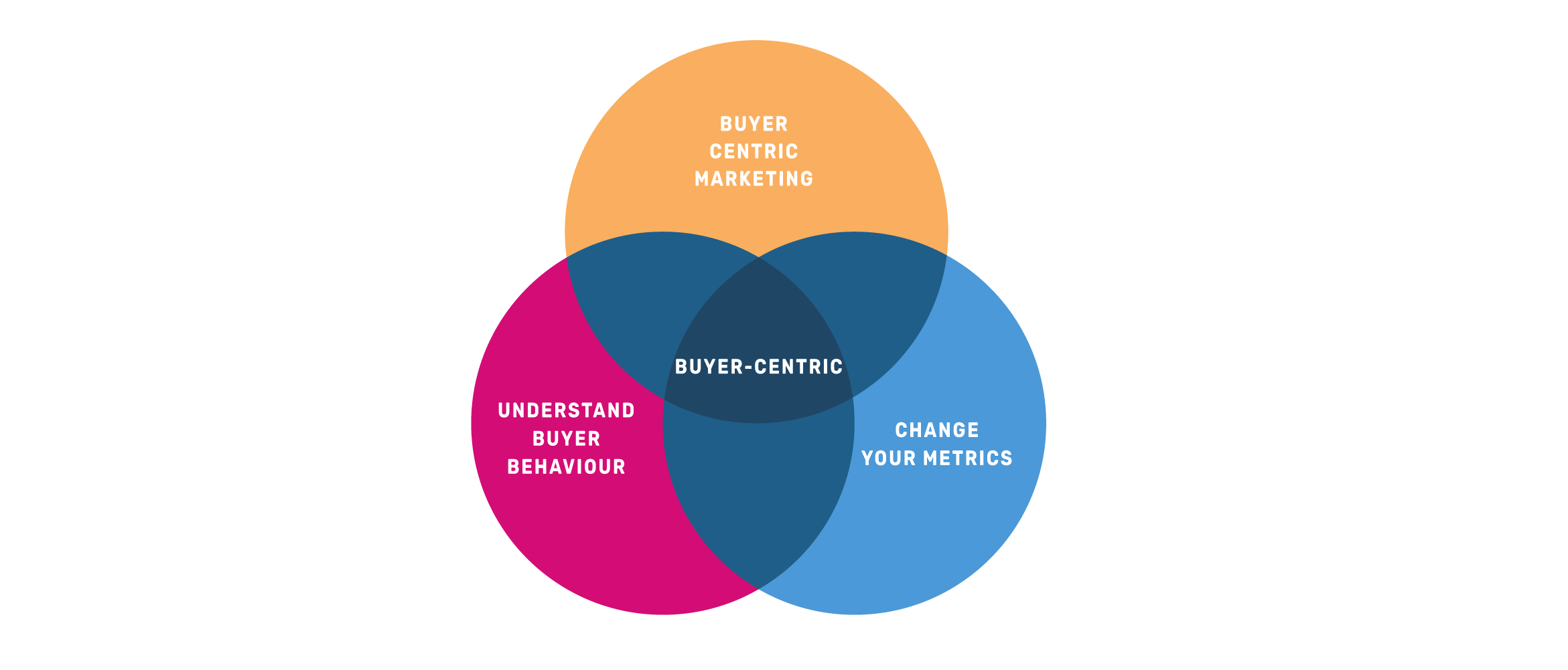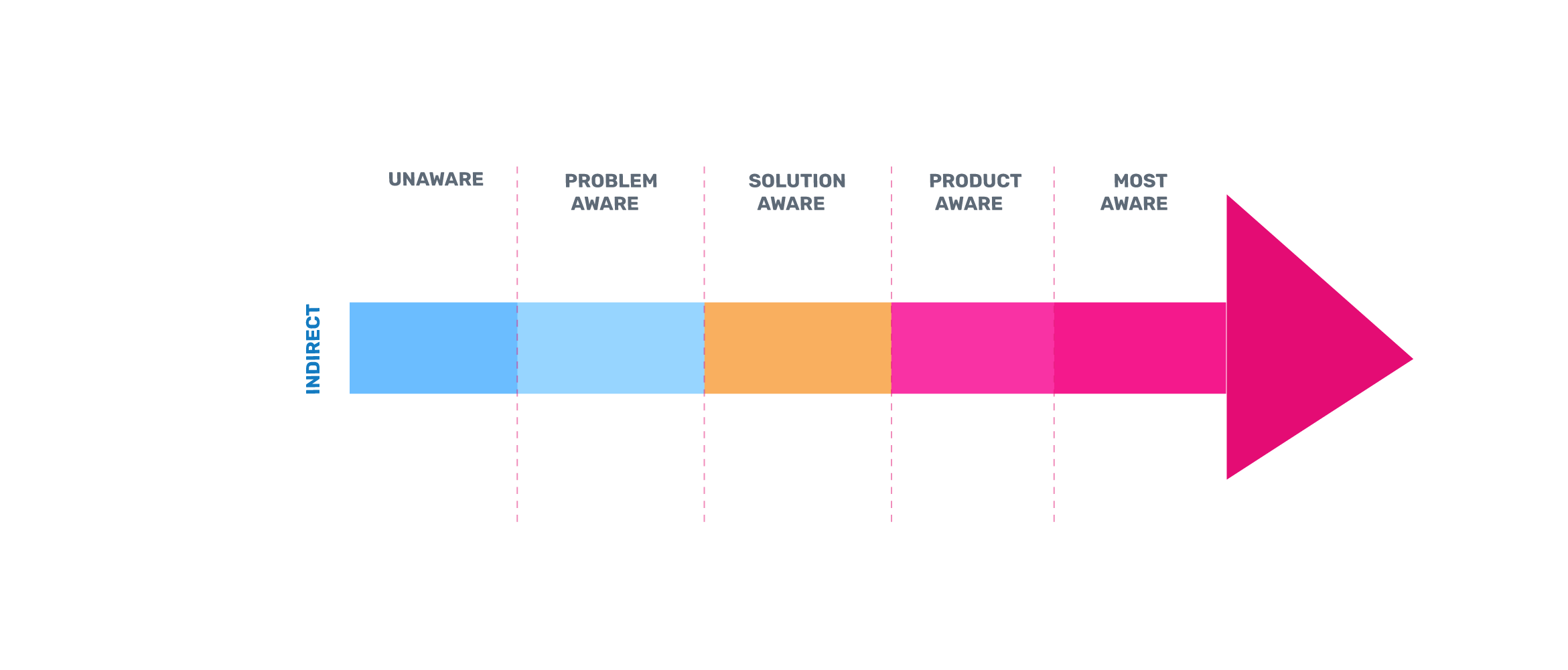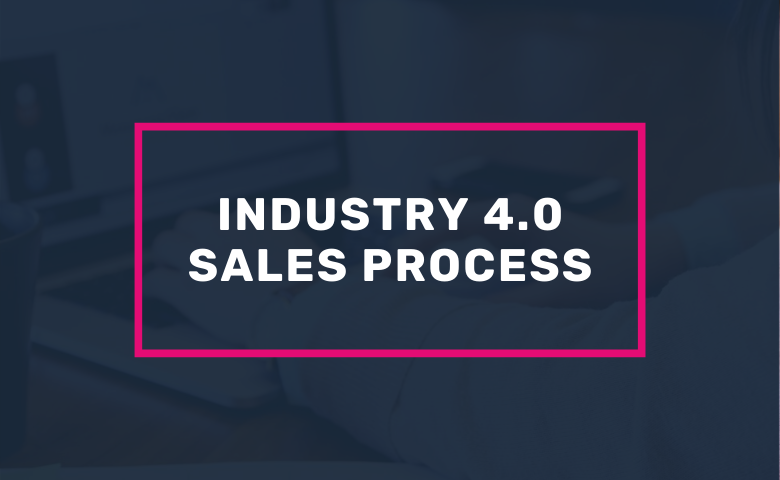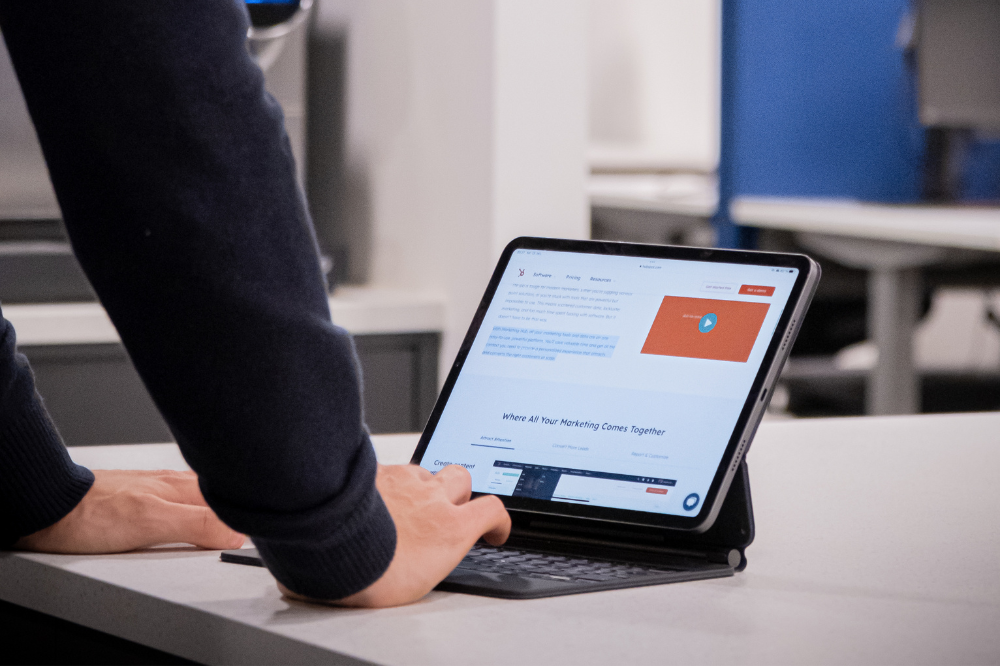Buyer awareness stages: How to align with buyers in a complex B2B sale
How to Build a Winning Buyer-Centric B2B Growth Strategy
Thorstein Nordby
|
14 minutter

Are you aligning your sales and marketing process with the way buyers want to buy? Buying behaviour has undoubtedly changed, and you need to adjust your strategy accordingly.
20 years ago, there were no social media. Search engines was not as ubiquitous as they are today. Companies got clients primarily from cold calling, advertising, trade shows, or relying on referrals.
That meant that the salespeople and the companies could control access to information.
Now you can search for the information you want: If a company does not provide that information, you will simply continue searching until you find a company that is willing to provide it.
Think about the way we use services as consumers of Spotify or if we want to buy a Tesla. These companies let us access content or information whenever we want it.
We take this behaviour and expectations into our professional lives, even if we're buying enterprise cybersecurity software or any other complex, expensive B2B product.
But many B2B companies are hesitant to change the way they market and sell.
They're doing cold calls, sending generic emails, gating their ebooks and other tactics that creates a bad experience for potential customers in their buying process.
These tactics do generate some results, but a shift to a more buyer-centric marketing strategy could lead to more opportunities that close in less time and reduced customer acquisition costs.
But what steps can you take to become more buyer centric? This article will cover:
1. Content consumption over MQLs
Companies need to make an important mindset shift and put education before getting conversions, leads, and sales. This runs counter to many of the activities companies are currently doing.
Buyers want to do research on their own time, in the channels of their choosing. They want to decide when they want to engage with you. They don't want to be squeezed into your marketing funnel.
Don't force website visitors to fill out a form, schedule a meeting, or talk to a salesperson to give them information that can easily be put on a website. If a buyer wants to buy, they'll contact you.
The first step to becoming more buyer-centric is to stop creating friction in the buying process and make information open access and easy to find through your website or a simple Google search.
Unnecessarily gating content reduces the number of people who are able to consume it, resulting in fewer potential buyers get to understand what you sell and the problem you solve for them.
Buyers understands the intent behind offering gated content. They know that the form is to get their contact information so that salespeople can call them to set an appointment.
If you have great content, you promote it to the right audience, and you have a product that will solve a problem that they have, you'll end up with more inbound opportunities in the end.
2. Change your metrics and behaviour
Metrics drive behaviour and incentives. If you only look at your attribution reports, you will make some misinformed decisions about what channels is actually driving revenue for your business.
The buying process today is too complex for any software to correctly attribute all the touch points that are involved in a complex B2B sale that usually involves multiple stakeholders over a long period of time.
If you are doing brand building activities such as podcasting, posting on LinkedIn, or running advertising campaigns on Facebook or LinkedIn to create awareness, your reporting might not be accurate.
A buyer might have listened to your podcast, viewed your posts on LinkedIn, and seen your ads on Facebook for months or years before they decide to contact you and talk to sales.
The problem? These activities are often hard to track.
In this scenario, the buyer goes to Google and searches for your company name and converts on your website form. Most reporting software would give Google the credit for this opportunity.
As it is hard to tie revenue to brand marketing, many companies will then make a misinformed decision about channel performance, reducing their investment in brand and move more money into search.
This is a big mistake if you want to run a buyer-centric marketing program.
The reality is that brand marketing activities (such as LinkedIn and podcasting) that are hard to measure are what drives more demand for your product further down the line.
When companies can’t tie brand awareness campaigns to a revenue number, they tend stop doing those activities even if those touchpoints are facilitating and making sale easier in the future.
The consequence is that companies focus too much on short-term, revenue focused activities and start ignoring activities that build reputation and relationships with their most high-value accounts.
What do I suggest instead?
Simply promote relevant content to your target accounts and set metrics closer to revenue. Instead of focusing on generating low-quality MQLs, ask yourself questions such as:
- Are people consuming the information we are distributing? Are people clicking on our ads, reading our articles, watching videos, and downloading our podcast?
- How many SQLs are we generating from our list of target accounts month over month?
- How many sessions are we getting from our target accounts each month?
- What trends are we seeing in our CRM? Is marketing contributing to more pipeline?
- How fast are inbound leads closing compared to other lead sources?
The whole is greater than the sum of the parts. Focus on improving the numbers that are the most critical to the business while letting go of measuring channels that are hard to tie to revenue.
3. Address pricing on your website
I get it. You sell complex solutions and there are many inputs and variables that affect the final quote for each client, or maybe you don't want your competitors to see your pricing and undercut you?
I understand that point of view, but look at it from the buyer's perspective. How do you feel when you're looking for pricing and you can't find any information on the vendor's website?
Price is almost always a decision criteria, whether you’re buying a TV or B2B software.
The reality is that as buyers, we expect to see information on pricing on a company website, and we're annoyed when companies either are too vague about pricing or hide pricing information.
However, you do not have to give the exact price.
You don't have to say it costs X, but you should at least provide a range or a minimum level of engagement (MLOE). You worry that it will scare prospects away. This is the point!
You want to push away prospects who are not a good fit.
By pushing away bad-fit prospects, your salespeople will spend their time more on opportunities that have a higher probability of closing in less time.
And your competitors? They will find out about your pricing somehow either way. Instead of worry would address pricing on your website as a pricing page or a blog post.
4. Make your outreach education-based
Everyone who has experience in sales has had an occasion where they have booked a meeting, had a good conversation, and then the deal has gone cold in the weeks following the meeting.
You might think you have failed as a salesperson. However, it it is more likely that they weren't ready to buy from you, and that they did not want to reject you and they stopped answering instead.
Many marketers like to proclaim that outbound is dying, but every relationship - professional or private - starts out cold somehow. It can start through a phone call, Google search, or a LinkedIn message.
It's more accurate to say that all outbound has to change based on how buyers want to buy.
People are inundated with generic cold outreach emails and cold calls. However, outbound can work as long as the outreach is timely, personalized, and aligned with the buyer's timeline.
When you reach out to someone, they're likely not ready to buy from you. Even if a prospect is a great fit, they still might be months or years away from investing in your product.
Instead of trying to get an appointment straight away, look at sales as a channel to proactively distribute educational content to your target audience.
Use a your list of target accounts, and have sales reach out to a prospect with a relevant content (videos, articles, etc) that educates them about what you sell and how it can solve their problem.
If you can identify 3-5 problems your prospects have, you can create content around those pain points and send it to the contacts in your target accounts.
While you might not get the meeting there and then, you will be able to stay top of mind. Instead of being another annoying salesperson, you have something valuable to give to your prospects.
If they have a need and have gotten value from the content you sent, you will be in a much better position in the future when that prospect is ready to buy.
Traditional outbound is hunting. Modern outbound is farming.
Conclusion
The buyer is in the driver seat, and you need to adjust your sales and marketing strategy accordingly. Start aligning with their needs, timeline and the way they want to buy.
Focus on these four areas to become more buyer-centric:
- Prioritise content consumption over generating MQLs
- Change your metrics, change your behaviour
- Address pricing on your website
- Make your outreach education-based


